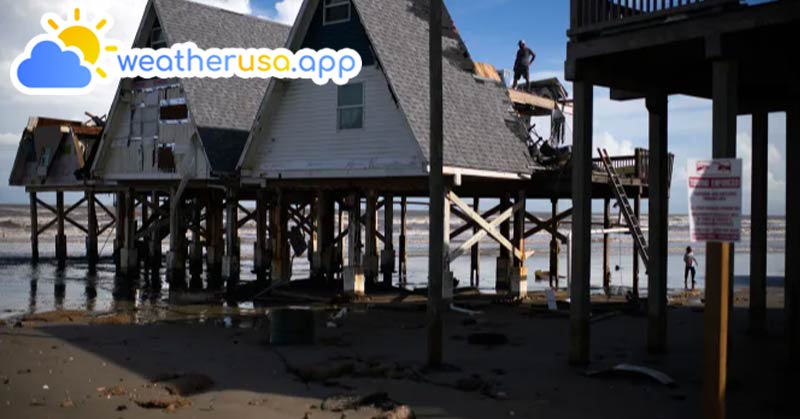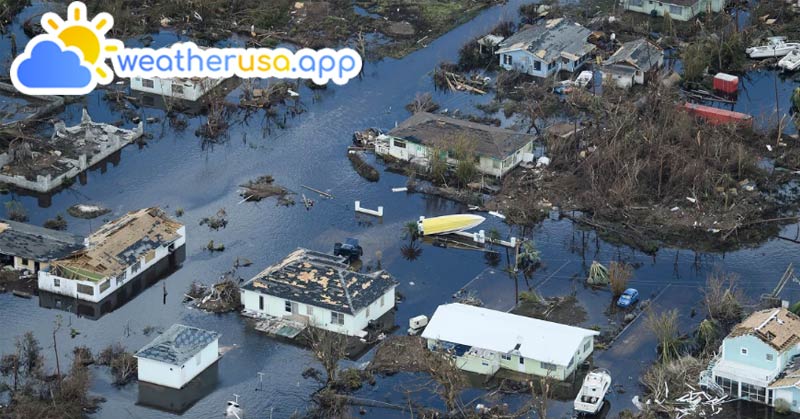
Arkansas has been significantly impacted by floods
Floods
Floods are one of the most common natural hazards in the United States. They can affect local neighborhoods or entire river basins and multiple states. Approximately 3,800 towns and cities in the United States, each with populations over 2,500, are situated on floodplains. Since 1903, the National Weather Service has recorded an average of ninety-two flood-related deaths per year, excluding those related to Hurricane Katrina in 2005. Over half of these fatalities since 1997 have involved vehicles.Weather Forecast For , notably in 1927 and 1937.
Flooding is influenced by factors such as climate, topography, and the size of river basins. Arkansas often experiences moisture flows from the Gulf of Mexico, which, when encountering the state's mountainous terrain, can lead to large, persistent thunderstorm systems and significant rainfall. Rivers originating in the Ozark or Ouachita mountains and flowing into the Mississippi Delta or Gulf Coastal Plain, such as the White, Black, St. Francis, Ouachita, and Little Missouri rivers, are prone to flooding by the time they reach lower elevations. High flows on the Arkansas, Red, and Mississippi rivers are typically due to extensive rainfall that saturates the ground over large areas, often triggering large-scale flood events.
See more: Weather forecast 71611 - Pine Bluff AR
Flash flooding is the most dangerous type of flood due to its sudden onset and severe impact, as seen in the 2010 Little Missouri flood at the Albert Pike Recreational Area. This type of flooding occurs when heavy rains fall on steep terrain, creating a rapid, destructive flow of water that carries debris. Overland flooding, which covers wide areas, can happen during levee breaks, emergency dam releases, or dam failures, causing extensive damage similar to flash floods.

Natural flooding is crucial for wetlands and bottomland forests, with lower floodplain levels in Arkansas flooding naturally about forty percent of the time each year. However, the issue of flood disasters is exacerbated by the disruption of natural ecosystems and development encroaching on floodplains.
The first Flood Control Act was passed by Congress in 1917, allocating $45 million for flood control on the lower Mississippi. Prior efforts were mostly small-scale and local, with federal work focused on navigation-related levee construction. The devastating floods of 1927 led to the Flood Control Act of 1928, significantly increasing federal flood control efforts. This included studies of river tributaries and the development of reservoir and levee projects, overseen by the U.S. Army Corps of Engineers. Enhanced monitoring and flood science efforts by the U.S. Geological Service and National Weather Service also began. The National Flood Insurance Act of 1968 introduced new flood protection programs for homeowners. In response to the National Governor’s Association's request to streamline federal emergency functions, President Jimmy Carter issued Executive Order 12127 in 1979, creating the Federal Emergency Management Agency (FEMA). FEMA now oversees the implementation of federal hazard-reduction policies and floodplain management. Climate and Average Weather Year Round in 71603 - Pine Bluff AR
Despite these measures, flood damage continues to increase, largely due to ongoing development on floodplains facilitated by government-provided flood insurance and relief assistance.
In 2006, the U.S. Geological Survey (USGS) estimated that average annual flood-related losses in the United States amounted to about $6 billion and 140 deaths. In fiscal year 2010, the National Flood Insurance Program paid out $17.3 million in claims in Arkansas alone. That same year, the number of flood insurance policies issued in Arkansas increased by five percent. From 1965 to 2004, the Arkansas counties with the most presidential disaster declarations (ranging from thirteen to fifteen) were Columbia, Craighead, Independence, Jackson, Poinsett, and Pulaski. Notably, eighty percent of all presidential disaster declarations involve floods.
Historic Arkansas Floods
The table below highlights historic flood years on Arkansas’s seven largest rivers, based on USGS data from the report "Magnitude and Frequency ofWeather Forecast For " (1995). This data, originally compiled from earlier reports, includes information up to the early 1980s. Stage levels and flows from various gauging stations were compared, typically including only floods exceeding two feet above bankfull. The number and record dates of gauge stations varied, with some years experiencing floods at only one station and others at all stations on a river.
Weather Forecast For 71602 - Pine Bluff AR
Two of Arkansas's most devastating floods were the Mississippi Valley Flood of 1927 and the Ohio-Mississippi Valley Flood of 1937. John Barry's 1997 book, "Rising Tide: The Great Mississippi Flood of 1927 and How It Changed America," details how in the last three months of 1926, every river gauge on the Ohio, Missouri, and Mississippi rivers recorded new average highs, setting the stage for record flooding in the spring of 1927. Levee breaches in 1927 inundated more than two million acres of farmland in Arkansas. Although 1937 saw fewer levee breaks, deliberate flooding of spillways and fuseplug levees—areas designated for controlled flooding to relieve pressure elsewhere—caused significant damage, including the flooding of about one million acres of agricultural land in Arkansas.

The two floods differed in other ways. The peak of the 1927 flood occurred in April, while the 1937 flood hit in mid-winter (January through February), a particularly challenging time for providing aid due to widespread influenza and pneumonia. In 1937, newly developed power plants were submerged, leading to power failures that plunged cities and rural areas into darkness. While the 1937 flooding was more severe in the Ohio River Valley than in the lower Mississippi Valley, sparing Arkansas the brunt of the devastation seen in 1927, both events were catastrophic. The American Red Cross aided 208,965 cases in Arkansas in 1927 compared to 33,574 in 1937; the number of homes flooded, damaged, or destroyed was 85,481 in 1927 and 404 in 1937. Despite the differences in impact, both floods were highly destructive in Arkansas. Johnny Cash later popularized the 1937 flooding in his song "Five Feet High and Rising" (1959), recounting the flooding of the farmers’ resettlement colony at Dyess (Mississippi County).
In May 1990, heavy spring rains in eastern Oklahoma and western Arkansas led to flooding along the Arkansas, White, and Red rivers. Flood control storage at multiple dams was exceeded, resulting in emergency flood releases from Lake Eufaula on the Canadian River in Oklahoma, Lake Texoma on the Red River in Texas and Oklahoma, and Beaver Lake on the upper White River in Arkansas. These releases contributed to the already significant runoff in the three river basins.
See more: Zipcode in 71601 - Pine Bluff AR
Heavy rainfall events in March and April 2008 filled the U.S. Army Corps of Engineers’ White River reservoirs to record levels, necessitating emergency spillway releases at Beaver, Table Rock, Bull Shoals, and Norfork dams. Flooding on the lower White River continued into the summer of 2008. Greers Ferry reservoir maintained high water levels in 2009, leading to spillway releases in December of that year. Flooding in 2011 significantly affected the White River basin, particularly in Des Arc (Prairie County).
Weather 01852 - Lowell MA

82°
clear sky
Feels like 82°06:26/18:53
85°F
/80°F
38%
1024 hPa
7 mi
4.61 mph
